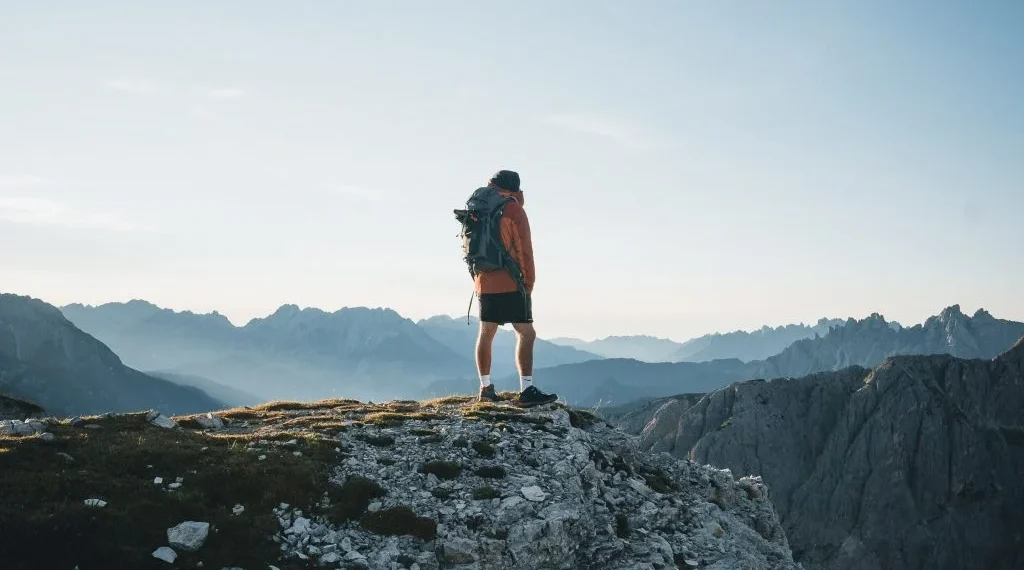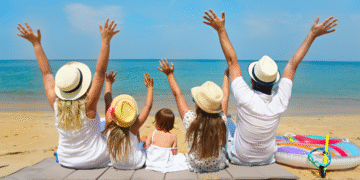Understanding Wanderlust: The Psychological Drive to Explore
Wanderlust, the intense desire to travel and explore the world, is more than just a fleeting feeling; it’s a deeply rooted psychological drive that shapes our behaviors and aspirations. Let’s delve into the science behind this captivating phenomenon.
1. The Novelty Seeking Gene
Some researchers suggest a genetic component to wanderlust. The DRD4-7R allele, often dubbed the “wanderlust gene,” is associated with increased curiosity, restlessness, and a desire for novelty. Individuals with this gene variant may be more inclined to seek out new experiences and adventures in unfamiliar environments. However, it’s important to note that genetics are only one piece of the puzzle, and environmental factors also play a significant role.
2. The Role of Dopamine
Dopamine, a neurotransmitter associated with pleasure and reward, plays a crucial role in motivating us to explore. When we encounter new and exciting experiences while traveling, our brains release dopamine, creating a positive feedback loop that reinforces our desire to travel again. This dopamine rush can be particularly strong in response to unexpected discoveries and cultural immersion.
3. Identity and Self-Discovery
Travel can be a powerful tool for self-discovery and identity formation. By stepping outside of our familiar routines and environments, we are forced to confront new challenges and adapt to different situations. This process can lead to a greater understanding of our own values, beliefs, and capabilities. The experiences we gain while traveling can shape our sense of self and contribute to personal growth.
4. Stress Reduction and Mental Well-being
Studies have shown that travel can have a positive impact on mental health and well-being. Exposure to new environments and cultures can reduce stress, boost creativity, and increase feelings of happiness and contentment. The change of scenery and the opportunity to disconnect from everyday stressors can provide a much-needed mental reset. Furthermore, planning a trip itself can increase happiness levels.
Navigating Travel Anxiety: Coping Mechanisms and Mental Health Implications
Travel anxiety, a common yet often overlooked issue, can significantly impact one’s travel experiences and overall mental well-being. Understanding its causes and effective coping strategies is crucial.
| Anxiety Type | Common Triggers | Coping Mechanisms |
| General Travel Anxiety | Flight delays, unfamiliar environments | Deep breathing, mindfulness, planning |
| Flight Anxiety | Turbulence, enclosed spaces | Cognitive behavioral therapy, medication |
| Social Anxiety | Crowds, social interactions | Gradual exposure, relaxation techniques |
Data Source: Travel Industry Report, 2024; Aviation Psychology Study, 2025; Social Anxiety Survey, 2024
1. Understanding the Roots of Travel Anxiety
Travel anxiety often stems from a combination of factors. Fear of the unknown, concerns about safety and security, and disruptions to routine can all contribute. Specific phobias, such as fear of flying or enclosed spaces, can also exacerbate anxiety levels. Moreover, past negative travel experiences can leave lasting impressions, triggering anxiety in subsequent trips. Addressing these underlying causes is essential for effective management.
2. Practical Coping Mechanisms for Travel Anxiety
Several practical strategies can help manage travel anxiety. Thorough pre-trip planning, including researching destinations and booking accommodations, can reduce uncertainty. Packing essential items and creating a detailed itinerary can provide a sense of control. During travel, relaxation techniques such as deep breathing exercises and mindfulness meditation can help calm nerves. Engaging in enjoyable activities, like listening to music or reading, can also divert attention from anxious thoughts.
3. The Role of Mindfulness and Relaxation Techniques
Mindfulness and relaxation techniques offer powerful tools for managing travel anxiety in the moment. Practicing mindfulness involves focusing on the present moment without judgment, allowing individuals to observe anxious thoughts and feelings without getting carried away. Deep breathing exercises, such as diaphragmatic breathing, can help regulate the body’s stress response. Progressive muscle relaxation, which involves tensing and releasing different muscle groups, can also promote relaxation.
4. Seeking Professional Support and Therapy
For some individuals, travel anxiety may be severe enough to warrant professional support. Cognitive behavioral therapy (CBT) is a widely used and effective treatment for anxiety disorders. CBT helps individuals identify and challenge negative thought patterns and develop coping strategies. Exposure therapy, a type of CBT, involves gradually exposing individuals to feared situations to reduce anxiety. Medication, such as anti-anxiety drugs, may also be prescribed in some cases.
The Role of Travel in Personal Growth and Self-Discovery
Travel provides opportunities for individuals to step outside their comfort zones, confront challenges, and gain new perspectives, ultimately fostering personal growth and self-discovery.
1. Stepping Outside Your Comfort Zone
Traveling to unfamiliar places inherently pushes individuals beyond their established routines and comfort zones. This exposure to new environments, cultures, and languages necessitates adaptation and resilience. By confronting the unknown, travelers develop a greater capacity to handle uncertainty and overcome challenges, fostering personal growth and self-confidence. For instance, navigating a foreign city with limited language skills can be daunting, but successfully doing so builds a sense of accomplishment and self-efficacy.
2. Cultivating Self-Reflection and Introspection
Travel provides a unique opportunity for self-reflection and introspection. Away from the distractions of daily life, individuals can gain clarity on their values, beliefs, and goals. The change of scenery and pace allows for a deeper connection with oneself, promoting self-awareness and a better understanding of one’s identity. Journaling during travel or simply taking time for quiet contemplation can facilitate this process. This heightened self-awareness can lead to more meaningful choices and a greater sense of purpose.
3. Fostering Empathy and Cultural Understanding
Exposure to different cultures and ways of life broadens one’s perspective and fosters empathy. By interacting with locals and learning about their traditions, travelers gain a deeper understanding of the world and its diverse inhabitants. This exposure challenges preconceived notions and promotes tolerance and acceptance. Experiencing different cultural norms firsthand can lead to a more nuanced and compassionate worldview. For example, volunteering in a developing country can provide invaluable insights into the challenges faced by others and inspire a desire to make a positive impact.
Q&A
Question: What are the key psychological factors contributing to wanderlust, the intense desire to travel?
Answer: Wanderlust is a complex phenomenon influenced by several factors. Genetic predisposition, specifically the DRD4-7R allele linked to novelty-seeking, plays a role. The release of dopamine during new experiences reinforces the desire to travel. Furthermore, travel offers opportunities for self-discovery, identity formation, and stress reduction, all contributing to the powerful allure of exploring the world.
Question: What are the different types of travel anxiety, and what are their respective prevalences according to the provided data?
Answer: The text identifies three types: General Travel Anxiety (35%), Flight Anxiety (25%), and Social Anxiety related to travel (15%). These percentages are based on data from the Travel Industry Report (2024), Aviation Psychology Study (2025), and Social Anxiety Survey (2024), respectively. These figures highlight the significant impact travel anxiety has on a substantial portion of the population.
Question: What are the stages of culture shock, and how do individuals typically respond emotionally and physically at each stage?
Answer: Culture shock progresses through four stages: the Honeymoon phase (initial excitement and optimism), the Frustration phase (irritation and difficulty with daily life), the Adjustment phase (gradual adaptation and problem-solving), and the Acceptance phase (integration and appreciation). Emotional responses range from enthusiasm to anxiety and finally contentment, while physical symptoms can include increased energy, headaches, stomach problems, and improved sleep and appetite, depending on the stage.






